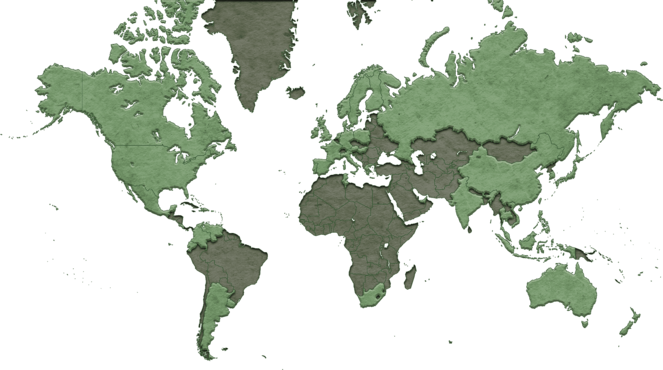
Is this America's most versatile municipal golf complex?
The completion of the North Course's redesign by Robert Trent Jones Jr. has transformed Corica Park into one of America's most valuable incubators for golfers, young and old.
ALAMEDA, Calif. - When the conversation of America's best municipal golf courses pop up, the usual suspects come to mind.
The big four - Bethpage Black, Torrey Pines South, TPC Harding Park and Chambers Bay - have all hosted modern major championships, but maybe that shouldn't be the most important metric for judging the merits of the best municipal golf facilities. I believe munis that are most impactful in their communities or most versatile to serving the needs of all types of golfer are the "best". From that perspective, there is no better municipal golf complex than Corica Park, especially since the long-delayed, redesigned North Course reopened March 29.
You could argue that New York state-owned Bethpage State Park boasts more courses (5) or that Torrey Pines hosts an annual PGA Tour event across its 36 holes, attracting thousands of bucket-list chasers every year. Corica Park isn't blessed with the bling of beautiful oceanside cliffs, but it's got something arguably better: a short course for growing the game and relatively affordable green fees for all golfers ($34-$99) depending on where you live and when you play.
Between the nine-hole Mif Albright Par-3 Course, the Rees Jones-redesigned South Course, the North Course by Robert Trent Jones Jr.; and a large TopTracer range, Corica Park delivers the full package to rise above most municipal competitors.
Think of it this way: players travel from Australia one minute (on the South Course) to Scotland half a world away (on the North) for their next tee time. The South Course, an Australian Sandbelt-themed layout loaded with 110 bunkers, provides a 6,874-yard championship test, while the 6,382-yard North Course delivers a fun, entirely unique alternative.
"We took a lot of inspiration from Scotland, utilizing the fairway as a form of hazard," Mike Gorman, the lead architect for RTJ II's design firm, said of the North Course's redesign. "The beauty of Scottish golf is that it's played along the ground."
Playing Corica Park's new North Course
During my recent visit to Corica Park, a college team (the University of San Francisco Dons) was practicing, tons of locals were walking both courses and still more golfers were using the large putting green or hanging out at the outdoor patio of the restaurant. Tunes piped through the outdoor speakers created a whole vibe.
I've played the South Course twice since the Rees Jones redesign in 2018. It's generally considered one of the top 25 munis in America. For more, read my review and interview with Jones from 2018.
Although the North shares the same land, it pivots in a completely different direction architecturally. It plays linksy, with firm turf thanks to 6 to 12 inches of sandcapping for proper drainage. Athletic turf from the Oakland Raiders' former practice facility was used for the stacked faces of the revetted sod wall bunkers. The cart paths are lined with 125 tons of recycled walnut shells. I actually hit a few solid shots off of them without an issue. Currently, the North Course is walking only, another nod to the game the Scots play.
I first played the front nine, originally designed by architect Marc Logan, in 2022. The wild green contours took a toll on my scorecard.
Some legal wrangling involving Logan, the course operator Greenway Golf and the city of Alameda led to a significant delay in the back nine's reconstruction. Bringing RTJ2 into the lead role to finish the work in 2023 probably worked out for the best. His team made a few minor changes on the front, including lengthening the drivable 8th hole beyond 258 yards to 283 yards from the tips.
The final loop really messes with your head. Avoiding water dictates how a round might go. A retention pond on the right makes it feel impossible to hit the green of the 451-yard, par-4 11th in regulation. A canal fronting the green on the 338-yard 12th looks like a burn you might see on the first hole of the Old Course at St. Andrews.
Water running up the left side of the 295-yard 15th can derail what should be a birdie hole. My foursome hit multiple clubs - driver, hybrid, fairway wood - and none of us came away with par. That's the sign of a tricky, risk-reward hole.
"What we did at Corica was to add the element of thinking," said Robert Trent Jones Jr. "Thinking is strategic golf. When you first see the hole…your golfer’s eye may see two or three different ways to play it - that adds the element of choice, options."
The par 3s really stand out. A playing partner compared the 208-yard 17th to a hole you might see at Carnoustie with a burn running along its left side. Three pot bunkers guard the front half of the 161-yard 13th. It was created as a nod to the Postage Stamp 8th hole at Royal Troon.
The afternoon winds, which always kick up off the bay later in the day, made every decision and shot we attempted difficult. We all agreed it would be fun to come back on a calmer day armed with some course knowledge and see what we could shoot.
That's the sign of an enjoyable course: it always beckons you back.


